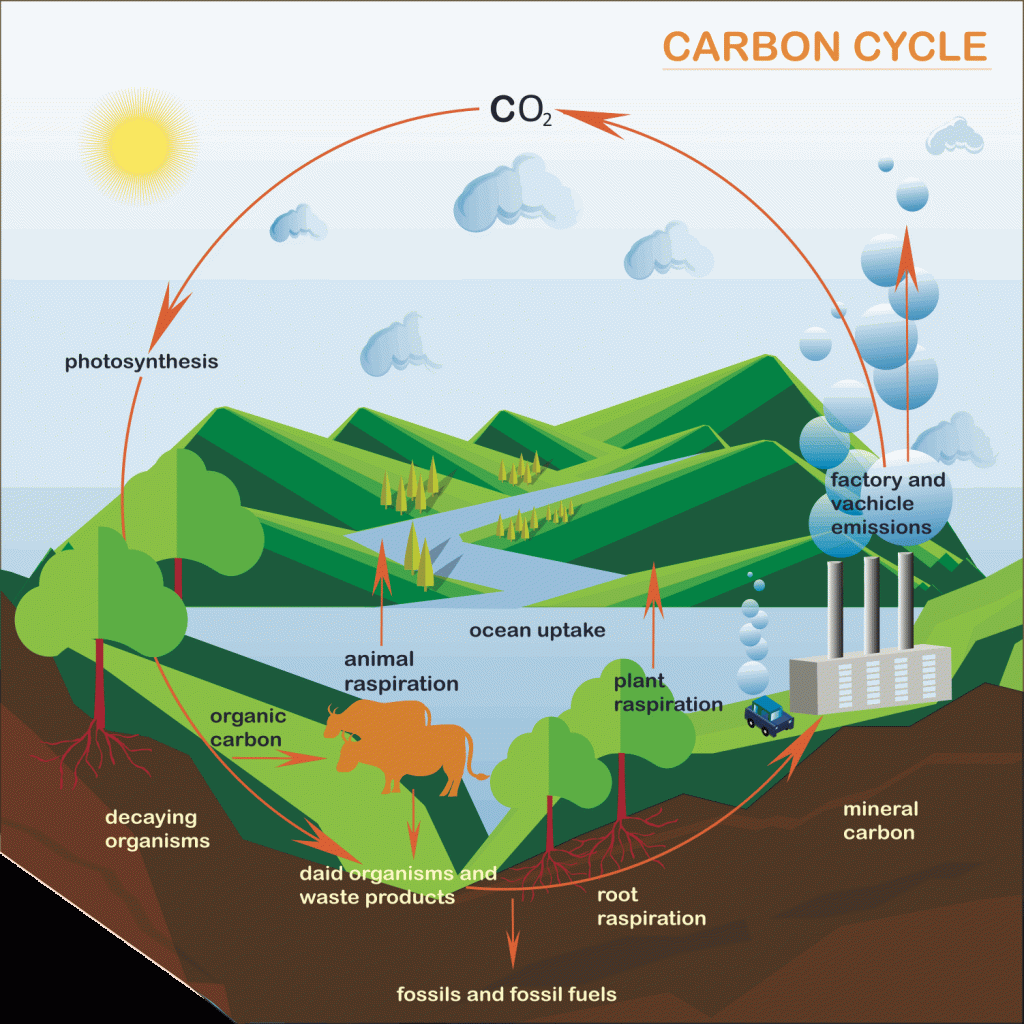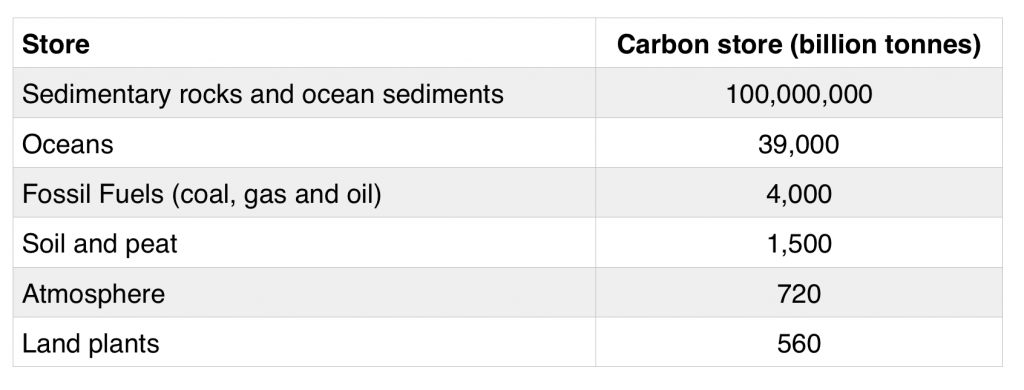Carbon
Carbon is an essential element to all living things on earth – plants and animals. It also plays a major role in controlling global climate, particularly temperature and in defining the acidity of rain, rivers and oceans. The carbon cycle involves the storage and movement of carbon.
The Carbon Cycle
The carbon cycle is dominated by land and sea stores. Carbon rapidly circulates the atmosphere, soil, oceans and biosphere.
Almost all carbon is stored in sedimentary rocks such as limestone.
The slow carbon cycle – storage
There are two elements to the carbon cycle. One is the slow carbon cycle, the other, the fast. The long carbon cycle involves the long-term storage of carbon. Marine organisms, such as shellfish and phytoplankton, build their shells by combining calcium with carbon. When they die they accumulate on the ocean floor. Over millions of years, these organisms become compressed and become carbon-rich sedimentary rock. This carbon is usually stored in rocks for around 150 million years.
Oceanic crust, containing sedimentary rock, is subducted causing the crust to melt. CO2 that was stored in the rock is released into the atmosphere through volcanic eruptions. Sedimentary rocks near the surface release CO2 as they are chemically weathered. Water flowing over sedimentary rock dissolves it transporting carbon to the oceans. Fossil fuels such as coal, oil and gas store carbon for millions of years.
The fast carbon cycle – storage
The transfer of carbon between the oceans, atmosphere, soils and living organisms is ten to one thousand times faster than the slow carbon cycle. Although carbon storage is small in the atmosphere, plants and soil they are a very important element of the carbon cycle. CO2 is absorbed by phytoplankton by photosynthesis after which it is transformed into carbohydrates and stored in their tissues.Respiration by living organisms releases CO2 to the atmosphere. CO2 is exchanged between the atmosphere and oceans with CO2 dissolved in surface water and a return of CO2 to the atmosphere by evaporation. Carbon is returned to the surface of the Earth as acid rain to start the cycle again.
Find out about the processes and pathways of the carbon cycle.



You must be logged in to post a comment.